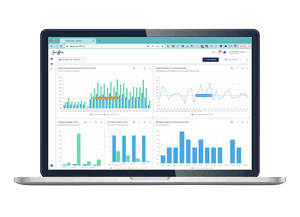Premium pricing
Premium pricing elevates product prices based on a brand’s strong reputation and unique features. Brands like Apple and Rolex exemplify this approach, where consumers pay not just for the product but also the associated brand prestige. This “halo effect” enhances perceived value. The beauty of premium pricing lies in its ability to boost profit margins without sacrificing sales volume, targeting a dedicated and loyal customer base.
Who is it for?
Despite premium pricing strategy being such a promising pricing approach, it is not a good fit for all products and businesses. Companies that can get away with setting high-profit margins are the ones selling products with a high perceived value. People know these products and are willing to pay top dollar to get them. But, in the end, you need a real brand. If you sell a product that people buy mainly because it’s cheaper than the one a competitor is offering, using the premium pricing technique can have a negative impact on your bottom line. If you want to make the most out of this pricing strategy, there are a few things that you should know:
Master Premium Pricing with Precision!
Amplify your brand’s allure and profitability with our software. Tailor your pricing strategies to reflect premium value, setting you apart in the market.

2. Premium pricing strategy doesn’t work in all industries. Premium pricing is a great way to increase your profit margins. You might be planning on investing heavily in marketing and building your brand, so you can use this pricing method once your brand image allows it. Unfortunately, this isn’t possible in all industries. In some cases, no matter how much you put into marketing your brand, you’ll never be able to use the premium pricing methods for your products. No matter how much you promote your detergent, nothing will ever justify it being 40% more expensive than the competition. Before you start paving the way for a premium pricing strategy, make sure that it can be applied to the products that you are selling. This is especially true in cases where you are highly dependable of distribution channels.
You look at Rolex, the average price tag they have on their watches varies from $7,000 to $12,000. Why is Rolex able to price their watches with high price tags when Daniel Wellington offers watches at $100? Sure, Rolex watches are of great quality. Sure, they look good. But the real answer is that the Rolex brand is a premium brand. Well-established and known by people, Rolex is able to use premium pricing to price their products.
Pros and cons
What are the advantages of a premium pricing strategy?
It creates a strong barrier to entry. After spending enough time in the market and establishing a strong brand name with premium-priced products, you make it increasingly hard for new companies to compete with you. Imagine a new luxury watch company that’s new to the market and trying to compete with established companies like Rolex and Patek Philippe. Reaching such a reputable status is something that requires years of dedication and lots of money invested in marketing. The more you stay on top as a premium company, the harder it is for new companies to compete.
What about disadvantages?
If you want to establish a brand that can price its products using the premium pricing method, you’ll need to invest lots of money in marketing. Your reputation and the perceived value of your product are an essential factor in getting people to pay such high prices for your products. The more you invest in quality marketing, the faster you’ll be able to establish the brand reputation you’re after. This is a major downside of this pricing method as you’ll have to keep marketing your brand if you want to continue using the premium pricing method. This can hinder your company’s growth, as lots of your resources are dedicated to marketing.

